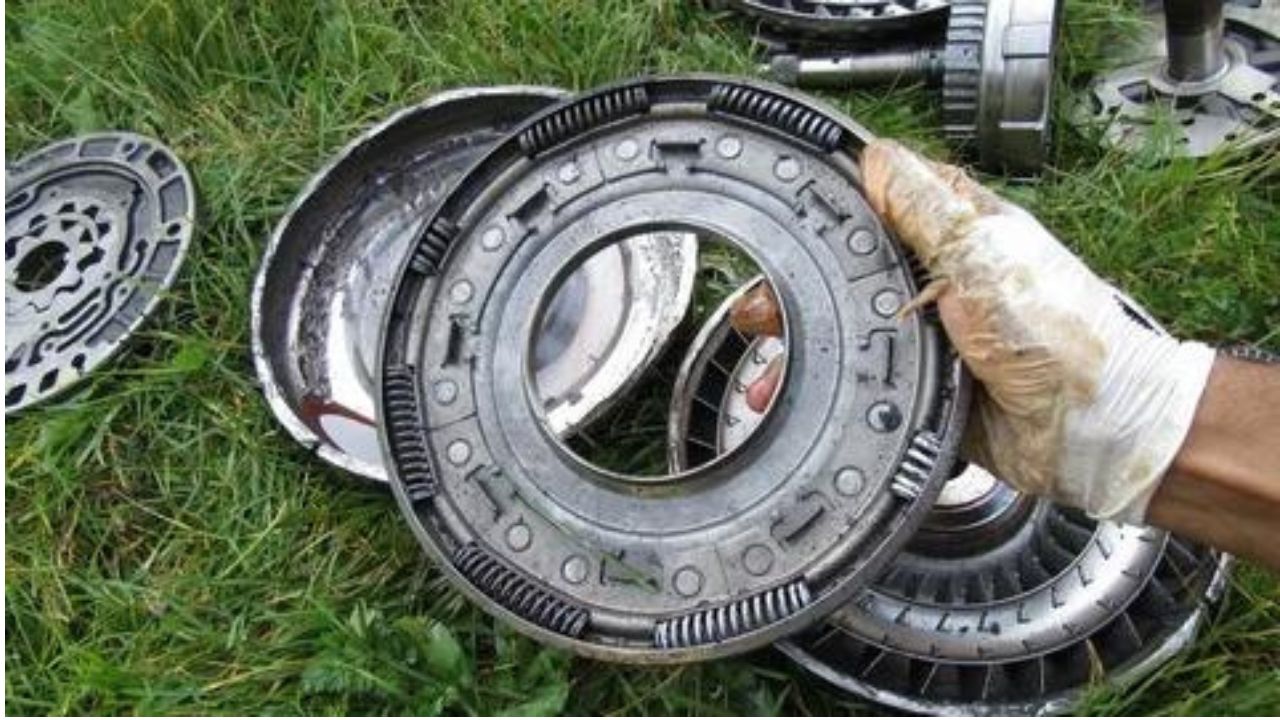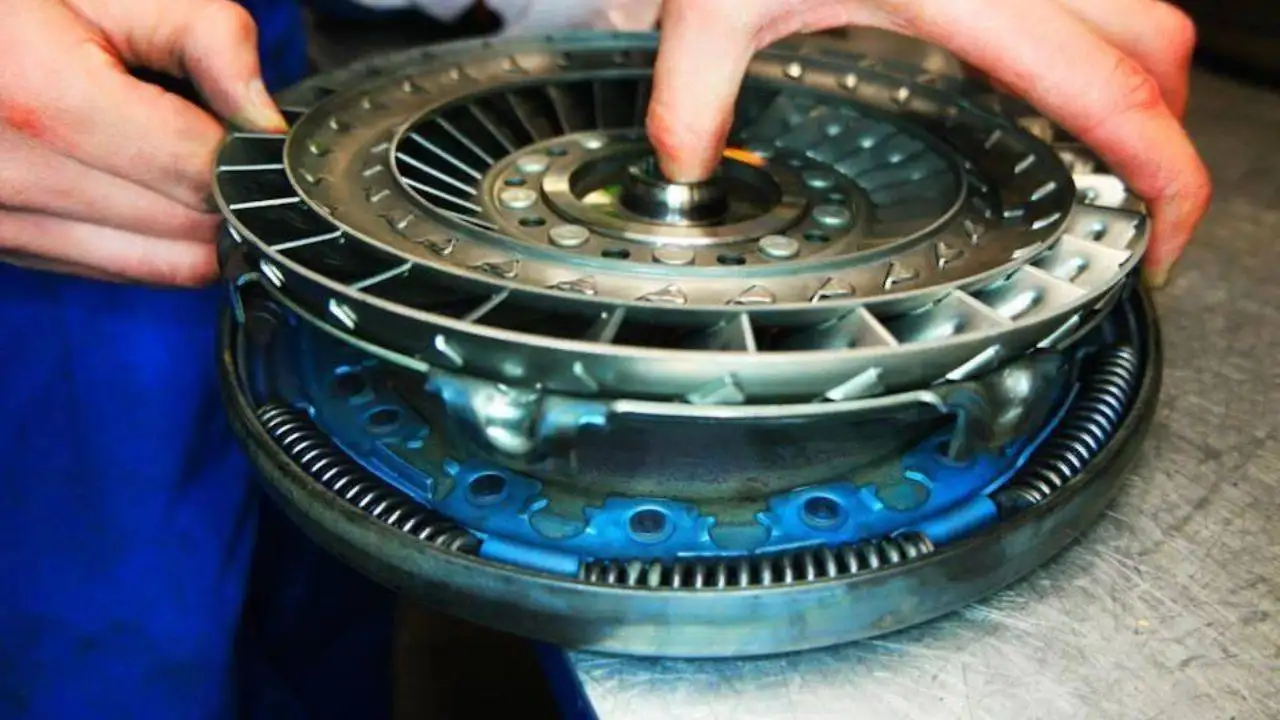Your car’s torque converter is a vital transmission component filled with automatic transmission fluid (ATF). Draining and replacing old ATF is essential for smooth shifts and extending your transmission’s lifespan. How to drain a torque converter presents a unique challenge? Here’s how to do it right:
Why Drain Your Torque Converter?
Complete Fluid Change: Draining just the transmission pan leaves old, dirty fluid in the converter. A complete system flush, including the converter, ensures optimal cleanliness.
Prevent Contamination: Old fluid containing metal shavings or debris can damage transmission components. Draining everything removes potential contaminants.
Precondition
Vehicle-Specific Instructions: Always consult your vehicle’s service manual for specific torque converter drain plug locations and procedures.
Safety: Put the wheel chocks in place and apply the parking brake while working on a level surface.
Protective Gear: Wear eye protection and gloves.
Signs that Your Torque Converter Needs Draining
Recognizing the signs that your torque converter requires drainage can help prevent potential damage to your vehicle’s transmission system. Here are some common indicators that it’s time how to drain the torque converter:
Strange Noises
If you notice unusual noises coming from your vehicle’s transmission, such as whining, grinding, or clunking, it could indicate that the torque converter fluid is contaminated or low. Draining and replacing the fluid can help resolve these issues and restore smooth operation.
Slipping Gears
A slipping sensation while driving, particularly when shifting gears, can be a sign of low or contaminated transmission fluid. Drainage of the torque converter and replenishment with fresh fluid can improve gear engagement and prevent further slipping issues.
Overheating
Overheating of the transmission system can result from insufficient fluid levels or degraded fluid quality within the torque converter. Regular drainage and replacement of the fluid can help maintain optimal operating temperatures and prevent overheating-related damage.
Tools required to complete the task
- Oil drainage bucket
- Funnel
- Flare tool (depending on the make and model)
- Transmission oil & nuts (additional oil may be required)
- Socket wrench
- Screwdriver
- Vehicle’s manual
- Jack
- Jack stands
- New ATF
How to Drain Torque Converter: Step-by-Step

Preparation
Put the car in a parking lot on a level area and apply the parking brake. Before beginning the draining operation, let the engine cool.
Locate the Drain Plug: Many torque converters have a drain plug. Refer to your vehicle’s manual to find its exact location. It’s often near the bottom of the bell housing.
Remove the Drain Plug: Position your drain pan under the plug and carefully remove it with an appropriate wrench. Allow the fluid to drain completely.
Reinstall the Drain Plug: Clean the plug thoroughly and replace any sealing washers if necessary. Reinstall the plug, tightening it to the manufacturer’s specified torque.
Flush the System (Optional)
Method A:
Cooler Line Flush: Disconnect the transmission cooler line, which is usually connected to the radiator. Start the engine to pump old fluid out while simultaneously adding new fluid through the dipstick tube. This requires an assistant to shift gears while you monitor fluid flow.
Method B:
Professional Flush: Specialized machines at transmission shops offer the most thorough flushing.
Refill with New ATF: Check your manual for the correct ATF type and quantity. Add new fluid slowly through the dipstick tube, checking the level periodically.

Jacking Up the Vehicle
To get access to the transmission’s underbelly, raise the front of the car off the ground using jack stands or ramps.
Draining the Fluid
To remove the torque converter drain plug, place a pan below it and use a wrench or socket set to release it. Let all of the old transmission fluid settle to the bottom of the pan.
Refilling Transmission Fluid
Once the torque converter is drained, reinstall the drain plug and refill the transmission fluid using a funnel. For information on the proper kind and amount of fluid needed for your car, go to the owner’s handbook.
Common Mistakes to Avoid
When draining the torque converter, avoid the following common mistakes:
- Overfilling or underfilling the transmission fluid
- Using incorrect transmission fluid type
- Failing to properly tighten the drain plug
- Neglecting to check for leaks after refilling the fluid
Benefits of Regular Torque Converter Drainage
Regular drainage of the torque converter offers several benefits:
- Improved transmission performance and responsiveness
- Prevention of transmission overheating and damage
- Prolonged lifespan of transmission components
- Reduction of maintenance and repair costs over time
Important Notes
- Not All Torque Converters Have Drain Plugs: Some models require removing the transmission for complete draining. If this is the case, it’s best handled by a professional.
- Fluid Compatibility: Always use the recommended ATF for your vehicle to ensure smooth operation and prevent transmission damage.
- Safe Disposal: Properly dispose of old ATF at a recycling facility.

Additional Tips
- Replace the transmission filter while you’re at it.
- Have a helper to assist with shifting gears during flushing.
- Thoroughly clean up any spills to prevent slips and hazards.
Conclusion
One essential maintenance procedure that helps guarantee the durability and smooth operation of your car’s transmission system is draining the torque converter. By following the proper procedures outlined in this article and performing regular maintenance, you can keep your transmission in top condition and avoid costly repairs in the future.
FAQ
Is it Possible to Flush a Torque Converter?
Flushing a converter replaces the fluid without effectively removing any significant debris that might be trapped within it. If there’s debris present in the transmission pan, there’s likely more within the converter. If you have any concerns or if the transmission shows signs of substantial debris, it’s advisable to replace the converter.
How Long Does a Torque Converter Last?
A torque converter can last for the entire duration of a vehicle’s lifespan, usually around 200,000 miles. However, according to MyCarMakesNoise, no set amount of time determines how long a torque converter should survive or when it has to be changed.
Should I Drain my Torque Converter?
Deciding whether to drain your torque converter depends on factors like vehicle age and maintenance history.
What Causes Damage to a Torque Converter?
Leaking transmission fluid poses a significant risk to the torque converter’s health and performance. Over time, seals within the converter can wear out or become damaged, leading to fluid leaks.
How often should I Drain the Torque Converter?
The frequency of torque converter drainage depends on factors such as vehicle usage and driving conditions. As a general guideline, it’s recommended to perform this maintenance task every 30,000 to 60,000 miles.

